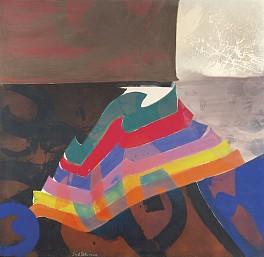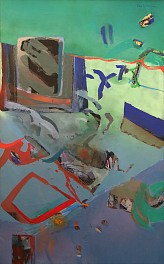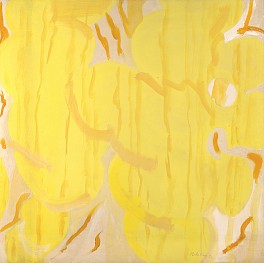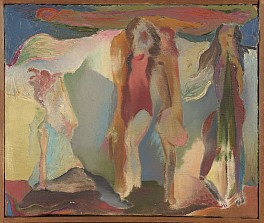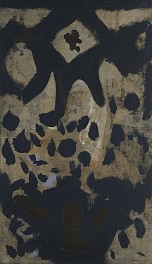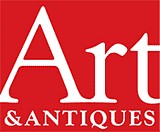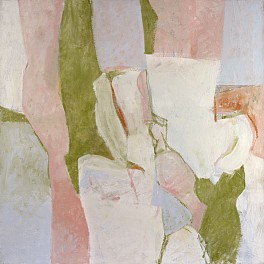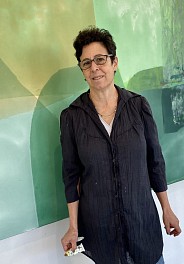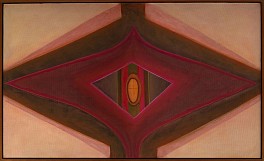Perle Fine | Positively Ninth Street Women
December 4, 2019 - Tim Keane for Hyperallergic
By the mid-1970s, critic Thomas Hess acknowledged the critical favoritism shown to postwar male artists when he singled out the women of the Ninth Street Show as “sparkling Amazons.”
KATONAH, New York — The Ninth Street Show in 1951 is among the more enduring of the origin stories about New York’s postwar art scene, uniting the theme of artist solidarity to the ideal that art can be a vocation unsullied by money and fame.
As the story goes, painter Jean Steubing, working on behalf of her obscure New York artist-peers, secured gallery space in a vacated storefront on East Ninth Street near Broadway. The resulting exhibition was curated by Leo Castelli with substantial input from artists, around 60 of whom were included in the hastily assembled roster. History — or legend — holds that the show was a breakthrough. Museum curators and uptown collectors attended and began to acquire this brave new art. Art reviewers noticed, too. And as the 1950s progressed, New York surpassed Paris as the art-making capital of the world.
In reality, the tale of the Ninth Street Show did not end quite happily ever after. Only a handful of the Ninth Street artists gained increased recognition from it. Even fewer saw any sales. Still, postwar New York accommodated these artists who, for the most part, operated without institutional affiliations. In the 1950s, a downtown loft could be rented for about $30 a month — the equivalent of about $400 in today’s money. So most Ninth Street artists soldiered on in obscurity, getting by through shitty day jobs or family money while finding morale boosts and genuine recognition through their own cooperative galleries. Many finally left the city. Some, like Steubing herself, abandoned art-making entirely.
Read More >>

